হাংরি আন্দোলনের সমীর ও মলয় রায়চৌধুরীর পূর্বপুরুষের ইতিহাস

ঋষি সাবর্ণির নামানুসারেই পরিচয় সাবর্ণ গোত্র বা গোষ্ঠীর। এই গোষ্ঠীর আদি বাসস্থান ছিল কাহ্নকুব্জ, যা এখন কনৌজ নামে পরিচিত। গৌড়ের রাজা আদিশূর যে ব্রাহ্মণ পঞ্চককে কাহ্নকুব্জ থেকে এনেছিলেন তাঁরা রাঢ়ীয় ব্রাহ্মণ নামে পরিচিত। এঁদের মধ্যে অন্যতম হলেন শ্রী বেদগর্ভ। বাকি চার জন হলেন শ্রী দক্ষ, শ্রী ভট্টনারায়ণ, শ্রী হর্ষ এবং শ্রী ছন্দ (ছান্দড়)। তখন বঙ্গদেশে সপ্তশতী ব্রাহ্মণদের মধ্যে যজ্ঞকার্যে পারদর্শী কেউ না থাকায় বিশেষ যজ্ঞকার্য সম্পাদনের জন্য উপযুক্ত ব্রাহ্মণ পাঠাতে রাজা আদিশূর কাহ্নকুব্জের রাজা চন্দ্রকেতুর কাছে দরবার করেন। আদিশূরের প্রার্থনা শুনে গৌড়বঙ্গে পাঁচ জন বেদজ্ঞ সাগ্নিক ব্রাহ্মণকে পাঠান চন্দ্রকেতু। ওই পাঁচ ব্রাহ্মণের মধ্যে বেদগর্ভ ছিলেন ঋষি সাবর্ণির পৌত্র। তাঁর পিতা ছিলেন ঋষি সৌভরি। গৌড়বঙ্গে এসে বেদগর্ভ পেয়েছিলেন গৌরমণ্ডলের বটগ্রাম নামক একটি বর্ধিষ্ণু গ্রাম (বর্তমানে যা মালদহ জেলায় গঙ্গাতীরে বটরি বা বটোরিয়া গ্রাম)।

এই পণ্ডিত বেদগর্ভেরই অধস্তন পুরুষ লক্ষ্মীকান্ত রায় চৌধুরী হলেন সাবর্ণ রায় চৌধুরী পরিবারের প্রথম জমিদার এবং পরিবারের কুলতিলক। ৯৭৭ বঙ্গাব্দের (১৫৭০ খ্রিস্টাব্দ) আশ্বিন মাসে কোজাগরী লক্ষ্মী পূর্ণিমার দিন জন্ম লক্ষ্মীকান্তের। লক্ষ্মীপূজার দিন ভূমিষ্ঠ হয়েছিলেন বলে নাম লক্ষ্মীনারায়ণ বা লক্ষ্মীকান্ত। সন্তান জন্ম দিয়েই মা পদ্মাবতীর মৃত্যু হয়। শিশুপুত্রকে কালীঘাটের প্রধান পুরোহিত আত্মারাম ঠাকুরের কাছে অর্পণ করে বাবা জীয়া গঙ্গোপাধ্যায় চলে গেলেন মণিকর্ণিকায়, হয়ে উঠলেন সাধক কামদেব ব্রক্ষ্মচারী ।

পোস্টমডার্ন ভাবনাচিন্তায় স্হানিকতা, স্হানিক ইতিহাস, হ্যাজিওগ্রাফি বা স্হানিক আখ্যানের গুরুত্ব, আর তার সম্পর্কে আগ্রহ সারা পৃথিবী জুড়ে যখন বাড়ছে, আর আলোচ্য হয়ে উঠছে বিভিন্ন বিদ্যায়তনিক সেমিনারে, আমরা একজন স্হানিক ব্যক্তিত্বের জীবনকে, যা সবাই ভুলতে বসেছি, আরেকবার আলোচনা করে, উত্তর-ঔপনিবেশিক স্মৃতি-বিপর্যয় থেকে কিছুটা আত্মরক্ষা করার চেষ্টা করতে পারি। আমরা যাঁর কথা বলছি তাঁর নাম লক্ষ্মীকান্ত। সাবর্ণ চৌধুরী বা সাবর্ণ রায়চৌধুরী শব্দবন্ধটির ইনিই উৎসসূত্র। তারঁ বংশধররা, যাঁদের সংখ্যা এখন প্রায় কুড়ি হাজার, যাঁরা কলকাতা ছাড়াও হালিশহর, উত্তরপাড়া, মেদিনীপুর, বিরাটি, নিমতা, পাটনা, মুম্বাই, ব্যাঙ্গালুরু, নিউইয়র্ক , লন্ডন ইত্যাদি জায়গায় ছড়িয়ে পড়েছেন, তাঁরা সাবর্ণ চৌধুরী বা সাবর্ণ রায়চৌধুরী অভিধায় পরিচিত হলেও, লক্ষ্মীকান্ত'র পূর্বজদের কিন্তু সাবর্ণ চৌধুরী বা সাবর্ণ রায়চৌধুরী বলা হতো না। লক্ষ্মীকান্ত'র যখন আটত্রিশ বছর বয়স, তখন থেকে তাঁকে এবং তাঁর ছেলেদের সাবর্ণ চৌধুরী বলা আরম্ভ হল।
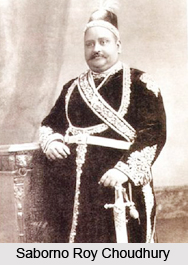
লক্ষ্মীকান্ত গঙ্গোপাধ্যায়ের জন্ম ১৫৭০ সালের কোজাগরী লক্ষ্মীপুজোর দিন। তাঁর জন্মের তৃতীয় দিনে তাঁর মা, পদ্মাবতী মারা যান। স্ত্রীর মৃত্যুতে লক্ষ্মী কান্ত'র বাবা জিআ গঙ্গোপাধ্যায় ভেঙে পড়েন, আর সংসার ত্যাগ করে তপস্বী হবার নির্ণয় নিয়ে ফ্যালেন। ছেলে লক্ষ্মীকান্ত'র ভার তিনি নিজের দীক্ষাগুরু আত্মারাম ব্রহ্মচারী'র হাতে সঁপে, বেরিয়ে পড়েন তীর্থ-পরিব্রাজক হয়ে, আর ধর্ম প্রচারক রূপে থিতু হন কাশীতে। সন্ন্যাস নেবার পর তাঁর নামকরণ হয় কামদেব ব্রহ্মচারী, এবং ব্রিটিশ ইতিহাসকারদের নথিতে তিনি এই নামেই পরিচিত। প্রকৃতি, বুদ্ধিতত্ত্ব, অহংকার, পঞ্চভূত, ইন্দ্রিয় ও পুরুষ ইত্যাদি ত্ত্বমূলক দর্শনশাস্ত্রে পাণ্ডিত্যের কারণে কামদেবের খ্যাতি ছিল। লক্ষ্মীকান্তকে স্তন্যদানের জন্য আত্মারাম ব্রহ্মচারী যাঁকে ধাত্রী নিয়োগ করেন, তিনি অব্রাহ্মণী ছিলেন । ব্যাপারটি বৈপ্লবিক ছিল নিশ্চয়ই, কেননা কামদেবের ঊর্ধতন একাদশতম পুরুষ পীতাম্বর গঙ্গোপাধ্যায়কে কুলীনত্ব দিয়েছিলেন বল্লাল সেন। তাছাড়া দক্ষিণ-রাঢ়ীয় ব্রাহ্মণ-সমাজের মেলবন্ধন-কর্তা দেবীবর ঘটক তখন এতই ক্ষমতাসম্পন্ন যে, তিনি ফতোয়া দিলে, একজন ব্রাহ্মণ কুলীন থেকে অকুলীন হয়ে সমাজের আধিপত্য-কাঠামোয় নিচের স্তরে চলে যেতে পারতেন।

কামদেব ব্রহ্মচারীর ঠাকুর্দা পঞ্চানন গঙ্গোপাধ্যায় ছিলেন কাটোয়ার আমাটি গ্রামের নিবাসী। পরে তিনি হুগলি জেলার গোহাট্য-গোপালপুরে চলে যান, এবং বাবা পরমেশ্বরের অধ্যাপন, যাজন ও মন্ত্রদানের পারিবারিক পেশা গ্রহণ না করে, ক্ষত্রিয়বৃত্তি গ্রহণ করে হুমায়ুনের সৈন্যবাহিনীতে আফগান বাহিনীর স্হানীয় অথিপতিরূপে যোগ দেন। এখন জায়গাটির নাম গোঘাট। পঞ্চাননের সময়ে গোরুর হাট বসত বলে গোহট্ট। বিভিন্ন যুদ্ধে ঘোড়ায় চেপে সাহসী লড়াইতে বিশেষজ্ঞ হয়ে ওঠেন, এবং সমরনায়ক হিসাবে সম্রাটের কাছ থেকে 'শক্তি খান' উপাধি পান। পরবর্তীকালে আফগানদের আনুগত্য কয়েক প্রজন্ম পর্যন্ত সহায়ক ছিল। ইতিহাসে তিনি 'পাঁচু শক্তিখান' নামে খ্যাত। তুর্কি ভাষায় শব্দটি হল 'সখৎখাঁ', অর্থাৎ দুর্ধর্ষ রাজকুমার। সৈন্যবাহিনী থেকে অবসরের পর পঞ্চানন গঙ্গোপাধ্যায় হালিশহরে বসত গড়েন। তিনি বিক্রমপুর থেকে বৈদ্য, কোন্নগর থেকে কায়স্হ, উড়িষ্যা ও তামিলদেশ থেকে যজুর্বেদী ব্রাহ্মণ এনে সবাইকে আলাদা-আলাদা পল্লী বা পট্টিতে থাকার ব্যবস্হা করে দেন। সেসব ওড়িষি আর তামিলদের আজ আর আলাদা করে চেনা যায় না। অন্যান্য পেশার লোকজনও এনেছিলেন তিনি, যাঁদের মধ্যে পরবর্তিকালে খ্যাতি পান মাটির কাজের লোক বা কুমোরেরা; ফলে হালিশহর (প্রকৃতপক্ষে 'হাভেলি শহর' ) কুমারহট্ট নাম পেয়ে যায়। ষোল বছরের কম বয়সের যে-সমস্ত শূদ্র ছেলেদের উনি যুদ্ধক্ষেত্রে বন্দী করতেন, তাদের অনেককে কায়স্হ বর্ণে উন্নীত করে প্রতিষ্ঠা দিয়েছিলেন। ওলন্দাজ পর্যটক ভান-দ্রেন ব্রুক ১৫৬০ সালে হালিশহরের প্রতিপত্তিতে বেশ অবাক হয়েছিলেন। হালিশহরের কালিকাতলা ঘাট থেকে ছিল পূর্ববঙ্গে ভূষণা যাবার জলপথ।

পাঁচু শক্তি খানের পর তাঁর ছেলে শম্ভূপতি, এবং নাতি জিআ বা কামদেব ব্রহ্মচারী, হালিশহরকে শিক্ষা এবং বাণিজ্যের কেন্দ্র হিসেবে গড়ে তুলেছিলেন। ১৯৪৭ সালে দেশভাগের পর হালিশহরের বাণিজ্য ঠেকেছে গিয়ে, মূলত ৩৪ বছরের বামপন্হী কুশাসনের কারণে, কুমড়ো চাষে ও কুমড়োপটাশ রাজনীতিতে। কিন্তু অষ্টাদশ শতকে মহারাজা কৃষ্ণচন্দ্রের আমলে নবদ্বীপের প্রতিপত্তির পূর্বে, পাঁচু শক্তি খান প্রতিষ্ঠিত হালিশহর শিক্ষাকেন্দ্ররূপে নিম্নবঙ্গে সর্বাধিক খ্যাতিপ্রাপ্ত ছিল। বহু টোল এবং পণ্ডিতমশায় ছিলেন সেখানে। এমনকি চৈতন্যদেব যে হালিশহরের জনৈক পণ্ডিতমশায়ের কাছে লেখাপড়া শিখেছিলেন, সে প্রসঙ্গ আছে বৈষ্ণব সাহিত্যে। সম্ভবত কামদেবের সন্যাস, আর তাঁর মোগল-খেতাব প্রাপ্তির পর, লক্ষ্মীকান্ত হালিশহরে বসবাস না-করায়, বসতটি ক্রমশ গুরুত্ব হারিয়ে ফ্যালে।

প্রাকঔপনিবেশিক স্হানিক আখ্যানগুলোয়, অ-স্বাভাবিক বাস্তব এবং কিংবদন্তিমূলক বিস্ময় একটি গুরুত্বপূর্ণ উপাদান। সাম্রাজ্যবাদের কাঁধে চেপে আধুনিকতাবাদ বঙ্গসমাজে অনুপ্রবেশ করার ফলে, বাঙালি আখ্যানবস্তু থেকে উপাদানটি একেবারে লোপাট হয়ে যায় ঔপনিবেশিক আমলে। লাতিন আমেরিকার সাহিত্য-আখ্যানগুলোয়, উপাদানটি ফিরিয়ে আনা হয়েছিল ম্যাজিক রিয়্যালিজমের মাধ্যমে। বঙ্গজীবনে সাম্রাজ্যবাদের প্রভাব, এবং স্বাধীনতার পর, ডায়াসপোরিক মহাআখ্যানবাদীদের চাপে, উপাদানটি ফিরিয়ে আনা যায়নি পশ্চিমবাংলার 'মূলস্রোত' আখ্যানগুলোয়। জিআ-র ছেলে লক্ষ্মীকান্ত'র জন্ম-আখ্যানে, যেহেতু ইংরেজরা তখনও ক্ষমতা দখল করেনি, এই উপাদানটি আছে।
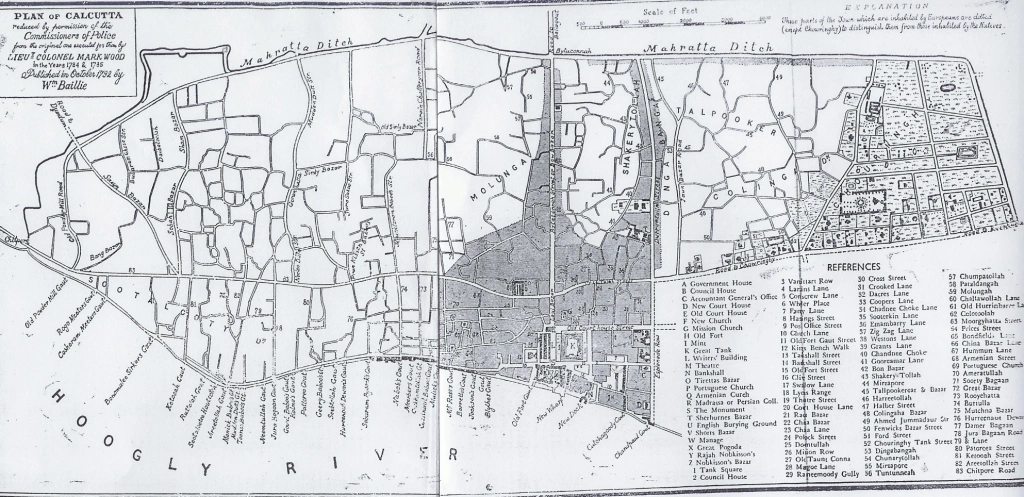
পঁয়ত্রিশ বছর বয়স পর্যন্ত জিআ গঙ্গোপাধ্যায়ের ( ১৫৩৫- ১৬২০ ) কোনও ছেলেপুলে হয়নি। তাঁর স্ত্রী পদ্মাবতীর বয়স, লক্ষ্মীকান্ত'র জন্মের সময়ে ছিল কুড়ি। রজঃস্বলা হবার সাত বছর পরও পদ্মাবতীর সন্তান না হওয়ায়, আত্মীয়-স্বজনরা বিরক্ত, ক্রুদ্ধ আর হতাশ হয়ে পড়েছিলেন। তা সত্ত্বেও জিআ আবার বিয়ে করেননি, কেননা পদ্মাবতী সত্যিই সুন্দরী ছিলেন। অতীব সুন্দরী ছিলেন বলেই, শ্রোত্রিয় ব্রাহ্মণকন্যা হওয়া সত্ত্বেও তাঁকে ছেলের বউ করে এনেছিলেন শম্ভূপতি। শ্রোত্রিয় ব্রাহ্মণরা কুলিনের ঘরে মেয়ের বিয়ে দিতে পারতেন, কিন্তু কুলীনকন্যাকে বিয়ে করতে পারতেন না।কুলগুরুর পরামর্শে জিআ ও পদ্মাবতী দুজনে তাঁদের পারিবারিক ঈশ্বরী কালীক্ষেত্রের কালীমূর্তির কাছে তিন দিন তিন রাত্রি সাষ্টাঙ্গ প্রার্থনা জানাবার পর, তৃতীয় রাতে, পদ্মাবতী, মন্দির-সংলগ্ন জলাশয়ের উপরিতলে, মন্দিরের পূর্বদিকে, ভাসমান জ্যোতির্মন্ডলীর দিকে স্বামীর দৃষ্টি আকর্ষণ করেন। পদ্মাবতী জিআকে জানান, তিনি স্বপ্নাদেশ পেয়েছেন যে, জলাশয়টিতে আলোর বৃত্ত দেখা দেবার পর তাতে স্নান করলে, তাঁর একটি ছেলে হবে।
পরের দিন, জলাশয়টিতে স্নান করতে গিয়ে, পদ্মাবতী দেখতে পেলেন যে, জলের ভেতর থেকে এজকন মহিলার ডান বাহু তাঁকে ইশারা করছে।তিনি ওই নারীর নির্দেশ শুনতে পেলেন যে, ওই জলাশয়ের তলদেশে সতীর ডান পায়ের অংশটি আজগো পড়ে আছে, আর সে-কথা যেন তাড়াতাড়ি সেবায়েতদের জানানো হয়। পদ্মাবতী ছোটোবেলায় শুনেছিলেন যে দক্ষযজ্ঞের সময়ে বিষ্ণু তাঁর সুদর্শন চক্রের দ্বারা সতীদেহের একান্নটি টুকরো কনখল থেকে ভারতের বিভিন্ন জায়গায় ছড়িয়ে দিয়েছিলেন, যার একটি, ডান পায়ের কড়ে আঙুল, এসে পড়েছিল, কালীক্ষেত্রের কালীমন্দির যে জায়গাটিতে, ঠিক সেখানে। পদ্মাবতীর নির্দেশে সেবায়েতরা পুকুরে নেমে একজন মহিলার অশ্মীভূত দান পা আবিষ্কার করেছিলেন। সেটি কালী মন্দিরের লোহার সিন্দুকে চিরকালের জন্য রেখে দেওয়া হয়েছিল বলে কিংবদন্তি।
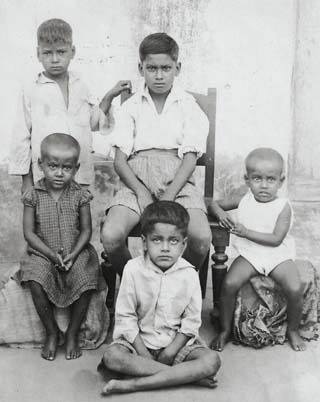
ঘটনাটির এক বছর পর ৯৭৭ বঙ্গাব্দে, আশ্বিন মাসের লক্ষ্মী পূর্ণিমার দিন বিকাল চারটে পনেরোয় লক্ষ্মীকান্ত'র জন্ম হয়, আর সে-কারণেই তাঁর অমন নামকরণ। তারপর থেকে জলাধারটিতে স্নান করলে ছেলেপুলে হয়, এমন গল্প ছড়িয়ে পড়ে সুবে বাংলায়।উপেন্দ্রনাথ মুখোপাধ্যায় সার্বভৌমের লেখা কালীঘাট ইতিবৃত্ত গ্রন্হে ক্রমবর্ধমান স্নানার্থিনীদের ভিড়ের কথা বর্ণনা করা হয়েছিল। উনি গ্রন্হটিতে তাঁর নিজের বিশ্বাস এবং স্নানার্থিনীদের সন্তানপ্রাপ্তির সাফল্যের কাহিনি লিখে গেছেন। লক্ষ্মীকান্ত'র সময়ে অবশ্য কালীঘাট শব্দটির উদ্ভব হয়নি। বলা হতো কালীক্ষেত্র কালীপীঠ। দক্ষিণে বেহালা থেকে উত্তরে দক্ষিণেশ্বর পর্যন্ত বিস্তৃত ছিল কালীক্ষেত্র এলাকাটি। ইংরাজদের আঁকা মানচিত্র থেকে অনুমান করা যায় যে লক্ষ্মীকান্ত'র ছেলেদের নাতিনাতনিদের সময়েও আদিগঙ্গা, যা এখন অত্যন্ত নোংরা টালির নালায় রূপান্তরিত হয়েছে, তা হুগলি নদীর চেয়ে চওড়া ছিল। অর্থাৎ, কিংবদন্তিটির পবিত্রতা বহাল ছিল বহুকাল পর্যন্ত। হালিশহরকে তখন বলা হতো হাভেলিশহর, পাঁচু শক্তিখানের হাভেলির খ্যাতির জন্য।

পাঁচু শক্তিখান, শ্যামরায় এবং কালী, দুটি সম্পূর্ণ পৃথক ভাবকল্পের পুজার প্রচলন করেন পারিবারিক স্তরে। চৈতন্যদেবের প্রভাবের কারণে শ্যাম রায়। যোদ্ধা ছিলেন বলে কালী। কালীঘাটের বর্তমান বিগ্রহটি প্রতিষ্ঠা করেছিলেন জিআ গঙ্গো[পাধ্যায়, লক্ষ্মীকান্ত'র জন্মের কারণে। সংলগ্ন ঘাটটি বাঁধিয়ে দিয়েছিলেন লক্ষ্মীকান্ত'র মেজ ছেলে গৌরীর (১৬০০-১৬৬৯) নাতি কেশবরাম (১৬৫০-১৭২৬) এবং সেই সূত্রে কালীঘাট আখ্যাটির উদ্ভব। মন্দিরটি তৈরি করানো আরম্ভ করেন কেশবরামের ছেলে শিবদেব (১৭১০-১৭৯৯), আর তা ১৮০৯ খ্রিস্টাব্দে সম্পূর্ণ করেন তাঁর উত্তরাধিকারী রাজীবলোচন । খরচ হয়েছিল তিরিশ হাজার টাকা।তাঁর বংশধর, বড়িশা-নিবাসী কালীকান্ত, উনিশ শতকের শেষাশেষি পর্যন্ত মন্দিরটির পুজো এবং অন্যান্য কাজ নিয়ন্ত্রণ করতেন। বিড়লাদের হিন্দুস্তান চ্যারিটি ট্রাস্ট মন্দিরকে সারিয়ে তোলে দেশভাগের পর। পুজো দিতে উনিশ শতক থেকেই বহু লোক আসতেন বটে, কিন্তু পরিবেশ এখনকার মতন বীভৎস ছিল না, যা টের পাওয়া যায় সূর্যকুমার চট্টোপাধ্যায় লিখিত কালীক্ষেত্র দীপিকা গ্রন্হটি থেকে। এটিও একটি উত্তরঔপনিবেশিক বিপর্যয়। লক্ষ্মীকান্ত'র প্রতি শ্রদ্ধায় কালীঘাটে দক্ষিণা কালিকা কার্তিকী অমাবস্যার রাতে লক্ষ্মীরূপে পূজিত হন। পরবর্তীকালে অব্রাহ্মণরা মহালয়ার পরবর্তী কার্তিকী অমাবস্যার রাতে কালীপূজার প্রচলন করেন।

লক্ষ্মীকান্ত'র জন্মের তিন দিন পর মারা গেলেন পদ্মাবতী। সত্রীর মরদেহের পাশে বসে জিআ তাঁর সদ্য-ভূমিষ্ঠ ছেলের ভবিষ্যতের কথা চিন্তা করছিলেন যখন, তখন হঠাৎ ছাদের কড়িকাঠের ফোকর থেকে একটি টিকটিকির ডিম তাঁর সামনে পড়ে ফেটে যায়। ফাটা ডিমটি থেকে বেশ কসরৎ করে বেরিয়ে আসে টিকটিকির খুদে বাচ্চা। কিন্তু বেরোবার পর সামান্য এগিয়ে টিকটিকির ছানাটি মৃতপ্রায় পড়ে থাকে চুপচাপ। একটা ছোট্ট পিঁপড়ে এগিয়ে যায় টিকটিকিটির কাছে। সদ্য ডিম ফুটে বেরোনো টিকটিকি পাশ ফিরে গপ করে গিলে ফ্যালে পিঁপড়েটাকে। ঘটনাটিতে দৈববার্তা খুঁজে পান জিয়া, যে, ছেলের ভবিষ্যৎ নিয়ে চিন্তার কিছু নেই। তালপাতার একটা শুকনো পাতায় এই কটা কথা লিখে, স্ত্রীর দাহ-সংস্কারের পর, তা শিশুটির বুকের ওপর রেখে, বেরিয়ে পড়েন বাড়ি ছেড়ে:
কাকঃ কৃষ্ণঃ কৃতো যেন হংসশ্চ ধবলীকৃতঃ।
ময়ূরশ্চিত্রিতো যেন তেন রক্ষং ভবিষ্যতি।।
জিয়া নিজেই নিজের সন্ন্যাসনাম নেন কামদেব, নিজেকে কাম থেকে মুক্ত রাখার অভিপ্রায়ে।যেহেতু আত্মারাম ব্রহ্মচারী ছিলেন তাঁর দীক্ষাগুরু, তাই সন্ন্যাসজীবনে পরিচিত হন কামদেব ব্রহ্মচারী হিসাবে। ডেরা নেন কাশীর মণিকর্ণিকা ঘাটে। রেলগাড়িহীন তখনকার দিনে পায়েহেঁটে বা নৌকায় কাশী পৌঁছাতে কতদিন লেগেছিল, সেসব কথা শিবেন্দ্রনারায়ণ শাস্ত্রী তাঁর বাঙ্গালার পারিবারিক ইতিহাস গ্রন্হে বা অতুলকৃষ্ণ রায় তাঁর এ শর্ট হিসট্রি অব ক্যালক্যাটা গ্রন্হে লিখে যাননি। জিআ'র সন্ন্যাস নেবার পর, লক্ষ্মীকান্ত'র দায়দায়িত্ব নিলেন কালী মন্দিরের সেবায়েত আত্মারাম ব্রহ্মচারী আর তাঁর সহায়ক আনন্দ গিরি।লক্ষ্মীকান্ত নামটি আত্মারাম-এর দেয়া, যদিও আনন্দ গিরি তাঁকে লক্ষ্মীনারায়ণ বলে ডাকতেন, আর কৈশোর পর্যন্ত তিনি লক্ষ্মীনারায়ণ নামেই পরিচিত ছিলেন। আত্মারাম ব্রহ্মচারী তাঁর জন্য সংস্কৃত সাহিত্য, ন্যায় শাস্ত্র, ফারসি, আরবি ও গণিত শিক্ষার ব্যবস্হা করেন। সেই সঙ্গে শরীর গঠন, ব্যায়াম আর কুস্তি শেখাবার লোক রাখেন।

সরকার সাতগাঁ বা সপ্তগ্রাম রাজস্ব বিভাগে অনায়াসে চাকরি পেয়ে যান লক্ষ্মীকান্ত, মূলত ঘণিতে সড়গড় আর বিভিন্ন ভাষা বলতে-লিখতে জানার জন্য। এখন হুগলি জেলার ত্রিশবিঘা রেলস্টেশন যেখানে, তার কাছাকাছি ছিল সপ্তগ্রাম বাণিজ্য বন্দর বা সাতগাঁ, যা ক্রমে গুরুত্বহীন হবে যায় ১৬৩২ সালে সরস্বতী নদীর স্রোত শুকিয়ে যাবার দরুন। সাতগাঁ ছিল শ্রীহরি গুহ, ওরফে রাজা বিক্রমাদিত্যের জাগিরের অধীন। এই জাগির অবশ্য কর্নওয়ালিসের জমিদারিপ্রথার জমিদারি নয়। শ্রীহরি গুহ এবং তাঁর দাদা জানকীবল্লভ ছিলেন গৌড় অধিপতি দাউদ খাঁ'র বিশ্বস্ত মন্ত্রী। দায়ুদ খাঁ'র কাছ থেকে তিনি বিক্রমাদিত্য উপাধি এবং পরে টোডরমলের কাছে যশোহরের জমিদারি পান। খুলনা তখন যশোহরের অন্তর্গত ছিল। ১৫৭৬ খ্রিস্টাব্দে রাজমহলের যুদ্ধে আফগান সুলতান দাউদ খাঁ হেরে গেলে বঙ্গদেশ মোগল সাম্রাজ্যের অঙ্গরাজ্যে পরিণত হয়। কিন্তু স্হানীয় সামন্তরা আকবরের হুকুম মানতেন না, বিশেষ করে আফগান সামন্তরা। শ্রীহরি গুহ নিজের জমিদারির সত্তর শতাংশ ছেলে প্রতাপাদিত্যকে আর তিরিশ শতাংশ ভাই বসন্ত রায়কে ভাগ করে দিয়েছিলেন। প্রতাপাদিত্য চেয়েছিলেন পুরো জমিদারি তাঁকেই দেয়া হোক। কিন্তু শ্রীহরি গুহ বসন্ত রায়ের কাছে কৃতজ্ঞ ছিলেন কেননা বসন্ত রায় বাংলার সুবেদার রাজা টোডরমলকে রাজস্ব নির্ধারণে সাহায্য করেছিলেন।

ভাষা এবং গণিতে সড়গড়, কর্মক্ষম, আর প্রত্যুৎপন্নতার জোরে সহজেই বিক্রমাদিত্যের নজরে পড়েন লক্ষ্মীকান্ত। বিক্রমাদিত্যের ছেলে প্রতাপাদিত্য তখন বাবার আয়-ব্যয়ের হিসাবরক্ষক আধিকারিক ছিলেন। বিক্রমাদিত্য লক্ষ্মীকান্তকে নিয়ে এলেন তাঁর ছেলের বিভাগে যাতে দুজনার বন্ধুত্ব থেকে পপতাপাদিত্য আর রাজস্বের লাভ হয়। ভুঁইঞা থেকে জাগিরদার হয়ে বিক্রমাদেত্যের ঝঞ্ঝাট বেড়ে গিয়েছিল। বয়সে প্রতাপাদিত্য দশ বছরের বড় হলেও, লক্ষ্মীকান্তের সঙ্গে তাঁর নিকট বন্ধুত্ব গড়ে ওঠে।
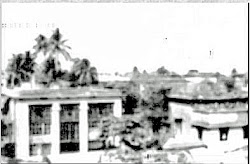
তার মাত্র কয়েক বছর আগেই সম্রাট আকবর সুবে বাংলার দখল নিয়েছিলেন। এবং যদিও সম্পূর্ণ বঙ্গদেশকে বাগে এনে শান্তি প্রতিষ্ঠা করে উঠতে পারেননি, বিভিন্ন ভূখন্ডের সামন্ত, যাঁরা ভুঁইঞা (ভৌমিক) নামে খ্যাত ছিলেন, মোগল দখলদারির আগে প্রায় স্বাধীন ছিলেন, এবং কেবল নাম-কা-ওয়াস্তে মোগল নিয়ন্ত্রণ মেনে নিয়েছিলেন।বিক্রমাদিত্যের পক্ষে অত্যন্ত কঠিন হয়ে উঠেছিল এই সামন্তরাজদের কাছ থেকে রাজস্ব আদায়, আর সেই সঙ্গে তাঁদের এলাকা থেকে মোগল সৈন্যবাহিনীর জন্য বাঙালি সৈন্য এবং খরচাখরচ যোগাড় করা।সমতট এলাকাটি প্রায় সরকারি নিয়ন্ত্রণের বাইরে চলে গিয়েছিল। ভুঁইঞাদের দেখাদেখি ছোটখাট সামন্তরাও সরকারি পাওনা মেটাতে অস্বীকার করতে লাগলেন। পরে, বিক্রমাদিত্যের নিজেরই ছেলে যশোহরের প্রতাপাদিত্যসহ বারোজন সামন্ত খ্যাত হন বারো ভুঁইঞা নামে। বাকি এগারোজন হলেন বিক্রমপুরের কেদার রায়, ভাওয়ালের ফজল বাহাদুর গাজি, খিদিরপুরের ইশা খাঁ, সাতৈলের রাজা রামকৃষ্ণ, চাঁদপ্রতাপের চাঁদ গাজি, ভূষণার মুকুন্দ রায়, চন্দ্রদ্বীপের বা বরিশালের কন্দর্পনারায়ণ রায়, ভুলুয়ার লক্ষ্মণমাণিক্য, পুঁটিয়ার রাজা, তাহিরপুরের রাজা এবং দিনাজপুরের রাজা। এঁদের মধ্যে সবচেয়ে শক্তিশালী সমরনায়ক ছিলেন ইশা খাঁ; যাঁর রাজ্য বিস্তৃত ছিল ঢাকা জেলার অর্থা২শ, ময়মনসিংহ, পাবনা, রংপুর জেলার কিছু অংশ থেকে ত্রিপুরার সারাইল পর্যন্ত।
বিক্রমাদিত্য অবসর নেবার পর তাঁর ছেলে জাগিরদারিতে বসলেন রাজা প্রতাপাদিত্য হয়ে। লক্ষ্মীকান্ত'র দৌত্য ও পারিকল্পনায় প্রতাপাদিত্য ভুঁইঞাদের নিয়ন্ত্রণে আনলেন, যশোহরের যথেষ্ট শ্রীবৃদ্ধি করলেন, এবং প্রজাহিতকর কাজে হাত দিলেন। লক্ষ্মীকান্তের দৌত্যে বাখরগঞ্জের রাজা রামচন্দ্রের মেয়ের সঙ্গে নিজের ছেলের বিয়ে দিয়ে প্রতিপত্তি বাড়ালেন প্রতাপাদিত্য। মোগল সুবেদার ইসলাম খাঁর সঙ্গে প্রতাপাদিত্যের সন্ধি করালেন লক্ষ্মীকান্ত। ক্রমে পাশ্ববর্তী রাজাদের হারিয়ে নিজের নিয়ন্ত্রণে আনলেন খুলনা আর চব্বিশ পরগণার বিস্তীর্ণ অঞ্চল। প্রতাপাদিত্য এবং লক্ষ্মীকান্ত নিজেরা দিল্লি গিয়ে আকবরের সঙ্গে দেখা করে পুরো বকেয়া মিটিয়ে দিয়ে এলেন। তার প্রতিদানে আকবর প্রতাপাদিত্যকে দিলেন মহারাজার সনদ এবং লক্ষ্মীকান্তকে মজুমদার উপাধি। মৌজার ভূস্বামীরা 'মজমুয়াদার' অভিহিত হতেন। ফারসি মজমুয়াদার বাংলায় হয়ে গেছে মজুমদার। মহারাজার খেতাব, পরিবর্তন ঘটিয়ে দিল প্রতাপাদিত্যের চরিত্রে। মোগল সুবেদারের সঙ্গে সন্ধিভঙ্গ করলেন। লক্ষ্মীকান্ত'র পরামর্শ অগ্রাহ্য করতে লাগলেন তিনি।
সম্রাটের প্রতিনিধি হিসাবে বঙ্গদেশের তখতে শের খাঁ আসার পর, তখতের আধিকারিকদের মধ্যে জোচ্চুরি, খেয়োখেয়ি আর দৌরাত্ম্য এমন বেড়ে গেল যে সৈন্যদের আর সম্রাটের কর্মচারীদের মাইনে দেয়া প্রায় বন্ধ হয়ে গেল। ভেঙে পড়ল শাসন-ব্যবস্হা। প্রজাদের মধ্যে দেখা দিল তীব্র অসন্তোষ। সুযোগ বুঝে শের খাঁকে অগ্রাহ্য করতে লাগলেন প্রতাপাদিত্য। শের খাঁ আক্রমণ করতে পারেন আঁচ করে পর্তুগিজ রণকুশলী জলদস্যু রোদ্দা'র সহায়তায় এক শক্তিশালী নৌবহর গড়ে তুললেন প্রতাপাদিত্য। শের খাঁ তার আধখ্যাচড়া আধাপেটা সৈন্যবাহিনী নিয়ে আক্রমণ করলেন প্রতাপাদিত্যের সেনাদের, যার নেতৃত্বে ছিলেন লক্ষ্মীকান্ত, এবং হেরে নাস্তানাবুদ হয়ে ফিরে গেলেন। লক্ষ্মীকান্ত, প্রতাপাদিত্যের মহারাজা খেতাব পাবার সময়ে, মোগল সম্রাটের কাছ থেকে মজুমদার খেতাব পান বলে, এসময়ে লক্ষ্মীকান্ত গঙ্গোপাধ্যায় মজুমদার হিসাবে খ্যাত হন।
বারবার সম্রাটের সেনার আক্রমণ প্রতিহত করা সম্ভব হবে না আঁচ করে প্রতাপাদিত্য তাঁর কাকা জানকীবল্লভ গুহ, যিনি রাজা বসন্ত রায় নামে খ্যাত ছিলেন, এবং সুন্দরবনের বেশ কিছুটা অঞ্চল পরিষ্কার করে বসত গড়ে তুলেছিলেন, তাঁর সঙ্গে থাকা নিরাপদ মনে করলেন, কেননা সুন্দরবনের নদী, খাঁড়ি, নালার অলিগলিতে পর্তুগিজ নাবিক রোদ্দা'র ডিঙিনৌকা আর পালতোলা জাহাজের চোরাগোপ্তা আক্রমণ সামলে প্রতাপাদিত্যের কাছে পৌঁছানো সম্রাটের বাহিনীর পক্ষে সম্ভব ছিল না।
রাজা বসন্ত রায় ছিলেন ধর্মপ্রাণ বৈষ্ণব, প্রজাবৎসল, এবং তাঁর সাহায্যেই যশোহর রাজত্বের গোড়াপত্তন হয়েছিল। তাঁর সামান্য সম্পত্তির অধিকারের লোভে প্রতাপাদিত্য এবার বসন্ত রায়কে হত্যার ষড়যন্ত্র করলেন। রাজ্য শাসনের বহু ব্যাপারে বসন্ত রায়ের পরামর্শ নিতেন লক্ষ্মীকান্ত, এবং অগাধ শ্রদ্ধা করতেন তাঁকে। হত্যার ষড়যন্ত্রের কথা জানতে পারা মাত্র চাকরিতে ইস্তফা দিলেন আতঙ্কিত লক্ষ্মীকান্ত, এবং ফিরে গেলেন হালিশহরে, স্ত্রী আর ছেলে-মেয়েদের নিয়ে। বসন্ত রায়কে হত্যা করার পর প্রতাপাদিত্য তাঁর ছেলেকেও খুন করতে ছেয়েছিলেন, যিনি মানকচুর বনে কয়েকদিন লুকিয়ে থেকে বেঁচে যান। লোকমুখে তাঁর নামকরণ হয় কচু রায় ।
লক্ষ্মীকান্ত কোন সালে কোন পরিবারে বিয়ে করেছিলেন, এবং তাঁর স্ত্রী বা স্ত্রীদের নাম-ধাম-পিতামাতা সম্পর্কে বিশেষ তথ্য জ্ঞানেন্দ্রনাথ কুমার রচিত বংশ পরিচয়, সতীশচন্দ্র মিত্র লিখিত যশোহর খুলনার ইতিহাস বা গোরাচাঁদ রায়চৌধুরী সম্পাদিত লক্ষ্মীকান্ত-- এ চ্যাপটার ইন দি সোশাল হিস্ট্রি অব বেঙ্গল গ্রন্হে পাওয়া যায় না। এটুকু জানা যায় যে তাঁর একাধিক স্ত্রী ছিল, এবং প্রথমা স্ত্রীর নাম ভগবতীরানি। তবে তাঁর প্রথমা স্ত্রীর সঙ্গে তাঁর বয়সের পার্থক্য যে বিশেষ ছিল না, তা অনুমান করা যায়, কেননা তাঁর সাত ছেলে আর চার মেয়ের মধ্যে প্রথম সন্তান রাম-এর জন্ম যে সময়ে হয়, যখন লক্ষ্মীকান্তর বয়স মাত্র কুড়ি। সবচেয়ে ছোট ছেলের জন্ম যখন হয় তখন তিনি ষাট পেরিয়ে গেছেন, এবং সুবে বাংলার একজন বিখ্যাত জাগিরদার। তাঁর ছেলেরা হলেন রাম, গৌরী, গোপাল, বীরেশ্বর, কৃষ্ণ, গোপী ও মহাদেব। সমস্ত নামই পারিবারিক দেবী-দেবতা শ্যামরায় ও কালীকেন্দ্রিক। উনিশ শতকের প্রথমার্ধ পর্যন্ত নামকরণের অমন পারিবারিক ঐতিহ্য বজায় ছিল।
প্রতাপাদিত্যের সংস্পর্শে থাকলে তাঁর যে ক্ষতি হতো তা হালিশহরে বসে কিছুকালের মধ্যেই টের পেলেন লক্ষ্মীকান্ত। প্রথমে আজিম খাঁ, এবং তার কিছুকাল পরে ইব্রাহিম খাঁ'র নেতৃত্বে আকবর যে সৈন্যবাহিনী প্রতাপাদিত্যকে কাবু করার জন্য পাঠালেন, তারা সুন্দরবনের খাঁড়ি, জঙ্গল আর ম্যালেরিয়ায় বিধ্বস্ত হয়ে গেল। অমন আধমরা সেনাদের মেরে তাড়াতে বিশেষ বেগ পেতে হল না রোদ্দা'র সৈন্যদের। প্রতিদানে, রোদ্দা'র অনুরোধে, পর্তুগিজ মিশনারি যাজক ফাদার ফনসেকাকে প্রতাপাদিত্য তাঁর রাজধানি যশোহরে যে খ্রিস্টান গির্জা তৈরির অনুমতি দেন, সেইটিই বঙ্গদেশের প্রথম গির্জা। এর পর বেশ কিছুকাল বঙ্গদেশের ওপর সম্রাটের নিয়ন্ত্রণ প্রায় ছিল না। ইশা খাঁ ও তার ছেলে মুসা খাঁ প্রথমে মোগল সেনাপতি শাহ বরদিকে, ও পরে হুসেন কুলি খাঁ'র সেনাদের নিজের এলকা থাকে মেরে তাড়ান।
শাহজাদা সেলিম ১৬০৫ সালে নুরুদ্দিন মুহম্মদ জাহাঙ্গির নামে সম্রাটের তখতে বসার পর, বঙ্গদেশ থেকে রাজস্ব, সৈন্যখরচ, ও সেনা সরবরাহ প্রায় বন্ধ হয়ে গেছে দেখে সেনাধিপতি মান সিংহকে বিপুল বাহিনীসহ নির্দেশ দিলেন, যাতে প্রতাপাদিত্য এবং অন্যান্য ভূস্বামী যাঁরা মোগল সাম্রাজ্যকে অবজ্ঞা করে চলেছেন, তাঁদের দ্রোহ দমন করা যায়।

মান সিংহ বঙ্গদেশের উদ্দেশ্যে পথে ও নৌকায় বিশাল সেনাবাহিনী নিয়ে রওনা দিলেন। পথে মৃত সৈন্যদের দাহ ও ক্লান্তি অপনোদনের জন্যে তিনি কয়েকদিন কাশীতে অবস্হান করেন।কাশিতে বাঙালি সাধু-সন্ন্যাসীদের আধিক্যে মান সিংহ সুবিধাপ্রাপ্ত হন। তিনি বঙ্গদেশ সম্পর্কে বিস্তারিত তথ্য সংগ্রহ করেন; সেখানকার আয়ুর্বেদিক গাছপালা যা আহতদের জন্য প্রয়োজন হবে তার তথ্য সংগ্রহ করেন। সন্ন্যাসীদের সঙ্গে কথাবার্তার সূত্রে তিনি জনৈক জ্ঞানী সন্ন্যাসীর বিপুল জ্ঞানভান্ডার দ্বারা অভিভূত হন। তিনি অবাক হন দেখে যে সংস্কৃত, ফারসি, আরবি ও স্হানীয় অওধিভাষা জানা মানুষটি পাঁচু শক্তি খানের বংশধর।সন্ন্যাসীটি ছিলেন কামদেব ব্রহ্মচারী। যেহেতু শক্তিপূজকদের আক্রমণ করতে যাচ্ছেন, তাই তিনি কামদেব ব্রহ্মচারীর নিকট কালীমন্ত্রে দীক্ষা নেন ।
মোগল সেনাপতি মান সিংহের সঙ্গে সালকা ও মগরাঘাটে প্রতাপাদিত্যের সৈন্যদের তুমুল যুদ্ধ হয়। ইতোমধ্যে ভাওয়ালের ভুইঞা বাহাদুর গাজি মোগল পক্ষে যোগ দিয়েছিলেন ও মান সিংহকে নিজের বাঙালি সেনা সরবরাহ করেছিলেন। এবার প্রতাপাদিত্য হেরে যান। তার প্রধান কারণ ভবানন্দ মজুমদার নামে একজন তালুকদারের বিশ্বাসঘাতকতায়। ভবানন্দ বর্ধমানে গিয়ে মান সিংহের সঙ্গে দেখা করেন ও কী ভাবে প্রতাপাদিত্যকে ঘিরে ফেলা যায় তার ষড়যন্ত্র করেছিলেন। ভবানন্দের বংশধররা পরবর্তীকালে খ্যাত হন নদীয়ার রাজা নামে। পরাজিত প্রতাপাদিত্য আত্মসমর্পন করেন। তাঁকে বন্দি করা হয়।শক্তিমন্ত্রে নবদীক্ষিত মান সিংহ প্রতাপাদিত্যের আরাধ্যা যশোরেশ্বরীকে এবং তাঁর বাঙালি পুরোহিতদের নিজের সঙ্গে নিয়ে যান, এবং বিশেষ মনদির গড়ে প্রতিষ্ঠা করেন রাজস্হানের অম্বরে। আরো বহু বন্দির সঙ্গে প্রতাপাদিত্যকে দিল্লি নিয়ে যাবার দায়িত্ব মান সিংহ দিয়েছিলেন ইসলাম খাঁকে । কিন্তু ইসলাম খাঁ প্রতাপাদিত্যকে জানোয়ারের মতন লোহার খাঁচায় বন্দি করে নিয়ে যান। বন্দি অবস্হায় দীর্ঘ যাত্রা সহ্য হয়নি প্রতাপাদিত্যের। পথে, ১৬১০ সালে, তিনি মারা যান এবং তাঁর দেহসংস্কার হয় কাশীতে। মান সিংহ দিল্লি পৌঁছে প্রতাপাদিত্যের মৃত্যুর সংবাদ পান। আকবরের সামনে বন্দি প্রতাপাদিত্যকে হাজির করা হয়ে ওঠেনি তাঁর, এবং সেকারণে ইসলাম খাঁর কাছে ক্রোধ ও সম্রাটের কাছে ক্ষমা চান।
যুদ্ধে সাফল্যের পর মান সিংহ মণিকর্ণিকা ঘাটে শ্রদ্ধা জানান কামদেব ব্রহ্মচারীকে। মান সিংহ কামদেবের কাছে জানতে চান যে সম্রাট তাঁর জন্য কী করতে পারেন ।কামদেব তাঁকে জানান যে লক্ষ্মীকান্তকে যদি মৌজাস্তরের ভূস্বামী থেকে উন্নীত করা হয় তাহলে তার ও তার সন্তান-সন্ততিদের সুবিধা হয়। নদীয়ারাজের পূর্বজ ভবানন্দ কানুনগোকে, যিনি বিশ্বাসঘাতকতার পুরস্কারস্বরূপ প্রতাপাদিত্যের এলাকার মালিকানা পেলেন, মান সিংহ তাঁকে নির্দেশ দিলেন যে, লক্ষ্মীকান্তকে যেন যথেষ্ট ধনসম্পত্তি দেয়া হয়। মান সিংহ মোগল সম্রাটের কাছেও কামদেব ব্রহ্মচারীর বার্তা পৌঁছে দিলেন। মোগল সম্রাট একটি ফরমান জারি করে বাঁশবেড়িয়ার শূদ্রমণি রাজার সাহায্যে লক্ষ্মীকান্তকে হালিশহর থেকে সম্রাটের কাছে নিয়ে গেলে মোগল সম্রাট লক্ষ্মীকান্তকে "রায় মজুমদার চৌধুরী" উপাধি ও সেই সঙ্গে জাগিরদারের পতাকা, নাকাড়া এবং ঝালরদার পালকি উপহার দিলেন। 'রায়' উপাধিটি অস্হাবর সম্পত্তির জন্য এবং 'চৌধুরী' উপাধি স্হাবর সম্পত্তির জন্য। আসলে ফারসি বয়ানের 'চৌধারি' বাঙলায় করে নেয়া হয়েছিল 'চৌধুরী'। লক্ষ্মীকান্ত তাঁর নামের আগে রায় এবং নামের পর মজুমদার চৌধুরী ব্যবহার করতেন। মোগল দরবারে লক্ষ্মীকান্তকে বলা হতো 'রায় লক্ষ্মীকান্ত মজুমদার চৌধুরী'। মোগল সম্রাট দ্বিতীয় শাহ আলম ১৭৬৫ সালে ইস্ট ইনডিয়া কোম্পানিকে দেওয়ানি দেবার পর লক্ষ্মীকান্ত'র বংশধররা নিজেদের নাম থেকে মজুমদার শব্দটি পরিত্যাগ করেন। ব্রিটিশ শাসন ব্যবস্হায় তাঁদের উপাধিটি হয়ে দাঁড়ায় পদবি।মান সিংহ কামদেব ব্রহ্মচারীকে গুরু-মহাত্মা সম্বোধন করতেন বলে উত্তরভারতে তিনি মহাত্মা কামদেব ব্রহ্মচারী নামে খ্যাত হন। সেসময়ের বিভিন্ন ধর্মপুস্তকে তাঁর উল্লেখ আছে।
নূতন ব্যবস্হায় লক্ষ্মীকান্ত'র বাৎসরিক আয় দাঁড়াল বারো লক্ষ রৌপ্যমুদ্রা। মোগল সম্রাট লক্ষ্মীকান্তকে রাজা উপাধি দিতে চেয়েছিলেন কিন্তু দেবীবর ঘটকের কুলীন প্রথা প্রয়োগ ও অপব্যবহারের প্রেক্ষিতে, ব্রাহ্মণের নামে রাজা শব্দটি খাপ খাবে না অনুমান করে তি নি নিতে সবিনয়ে অস্বীকার করেছিলেন। তাছাড়া প্রথমে পাঁচু শক্তি খান আর পরে লকজষ্মীকান্ত নিজে অসিযোদ্ধা হয়ে ক্ষত্রিয়বৃত্তি নিয়ে প্রতিপত্তিসম্পন্ন ব্রাহ্মণদের মধ্যে ঈর্ষা ও হিংসে করার আবেগ জাগিয়ে তুলেছিলেন।
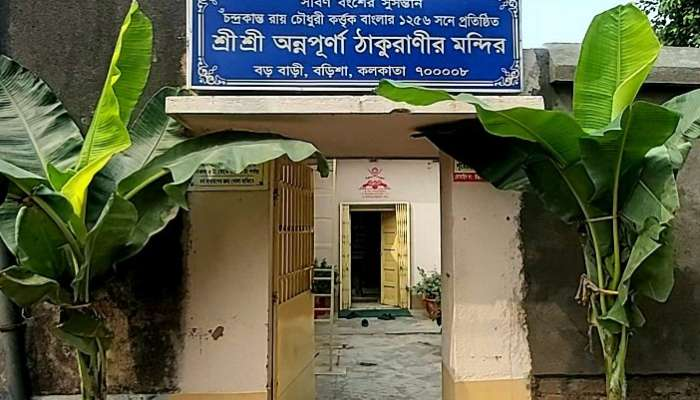
যে জাগির লক্ষ্মীকান্ত পেয়েছিলেন তা হল বেহালা থেকে দক্ষিণেশ্বর পর্যন্ত সমগ্র কালীক্ষেত্র, পরগণা মাগুরা, খাসপুর, কলকাতা, পৈকান, আনোয়ারপুর, আমিরাবাদ, হাভেলিশহর, হাতিগড় এবং লাগোয়া সুন্দরবনের বিস্তীর্ণ অঞ্চল। এই কলকাতা ছিল চব্বিশ পরগণার একটি পরগণা এবং কালীক্ষেত্রের ডিহিকলকাতা-সুতানুটি-গোবিন্দপুর থেকে আলাদা। এখনকার বৌবাজার, মির্জাপুর, সিমলা আর জানবাজার ছিল ডিহিকলকাতার অন্তর্ভুক্ত। গোবিন্দপুরের অন্তর্গত ছিল এখনকার হেস্টিংস, ময়দান এবং ভবানীপুর। এখনকার চিৎপুর, বাগবাজার, শোভাবাজার আর হাটখোলা ছিল সুতানুটির অন্তর্গত। ক্ষমতা বিন্যাসের প্রয়োজনে, লক্ষ্মীকান্ত হালিশহরের বাইরে বিভিন্ন জায়গায় কাছারিবাড়ি তৈরি করালেন, যার মধ্যে অন্যতম ছিল বড়িশাগ্রাম ও ডিহিকলকাতা।
ডিহিকলকাতার কাছারিবাড়ির সামনে সাবর্ণ চৌধুরীদের কুলদেবতা শ্যামরায়ের মন্দির ছিল। শ্যামরায় বেশিরভাগ সময় থাকতেন কালীঘাটে আর দোলের সময়ে যেতেন কাছারিবাড়ির মন্দিরে। দোলের সময়ে সামনের পুকুর লাল হয়ে যেত রঙখেলার দরুণ। সেই থেকে পুকুরটির নাম লালদিঘি। সাবর্ণ চৌধুরীদের এই কাছারি বাড়িতে কেরানি ছিলেন অ্যান্টনি ফিরিঙ্গির দাদু, যাঁর নামে অ্যান্টনি বাগান লেন। আর কাছারিবাড়ির প্রধান হিসাবরক্ষক ছিলেন নবকৃষ্ণ দেবের বাবা রুক্মিনীকান্ত। বর্তমানে হালিশহরে শ্যামরায় পূজিত হন অরুণকিরণ রায়চৌধুরীর বাড়িতে। উত্তরপাড়ায় শ্যামরায় পূজিত হণ বিশ্বনাথ রায়চৌধুরীর বাড়িতে। অন্যান্য দোলমঞ্চ ও প্রতিমার হদিশ পাওয়া যায় না। সিরাজদ্দৌলার পরাজয়ের পর ( সাবর্ণ চৌধুরীরা সিরাজের পক্ষে ছিলেন), সম্ভবত কোম্পানির সংগ্রাহকরা ব্রিটেনে নিয়ে গিয়ে থাকবেন।
মোগল সম্রাটের ফরমানে একটি বিস্তীর্ণ এলাকার জাগিরদারি লক্ষ্মীকান্ত পেলেন বটে, কিন্তু ভবানন্দ কানুনগো বেছে-বেছে ঘন জঙ্গল ও জলাভূমির অংশটি তাঁর ভাগ্যে বরাদ্দ করেছিলেন, যে অঞ্চলে উচ্চবর্ণের মানুষ বিশেষ যেতেন না। যে কয়টি গ্রাম এই অঞ্চলে ছিল, তাতে বাস করতেন সদগোপ, পৌন্ড্রক্ষত্রিয়, মাহিষ্য, কৈবর্ত, ব্যগ্রক্ষত্রিয়, ঝল্লক্ষত্রিয়, উগ্রক্ষত্রিয়, শৌন্ডকক্ষত্রিয় শ্রমজীবীরা। ব্রিটিশ শাসকদের প্রথম লোকগণনায় এই সমস্ত বাঙালি ক্ষত্রিয়দের শূদ্র হিসাবে বর্ণীকরণ করে দেয়া হয়েছিল। দশ বছরের মধ্যে সমতটের এই অঞ্চলে লক্ষ্মীকান্ত বন-জঙ্গল সাফ করিয়ে, জলাজমি ভরাট করিয়ে, বিভিন্ন পেশার পরিবার এনে, তাদের জমিজমা ও কাজ দিয়ে, বসবাসযোগ্য গ্রামসমূহের পত্তন করলেন। অবশ্য অ-কুলীন ব্রাহ্মণ পরিবার ও বসাক, শেঠ, দত্তরা তাঁর বংশধরদের অধীন কালীক্ষেত্র অঞ্চলটিতে আশ্রয় নিতে আরম্ভ করেন মারাঠা ভাস্কর পণ্ডিতের দক্ষিণবঙ্গ আক্রমণের পর। বৌবাজারে সোনার বেনেদের কয়েকটি পরিবারকে লক্ষ্মীকান্ত হালিশহর থেকে এনে ১৬১০ সালেই বসত গড়ে দিয়েছিলেন। নারদপুরাণ-এর গ্রন্হকার কবি কৃষ্ণদাস নিজের আত্মপরিচয় এইভাবে লিখে গেছেন: "সুবর্ণ বণিক কূলে উৎপত্তি আমার...। সাকিন কলিকাতা বহুবাজারেতে গ্রাম। দশ দশ শত নিরানব্বই সালে। মাহ জ্যৈষ্ঠ মাসে এই পুস্তক রচিলে।"
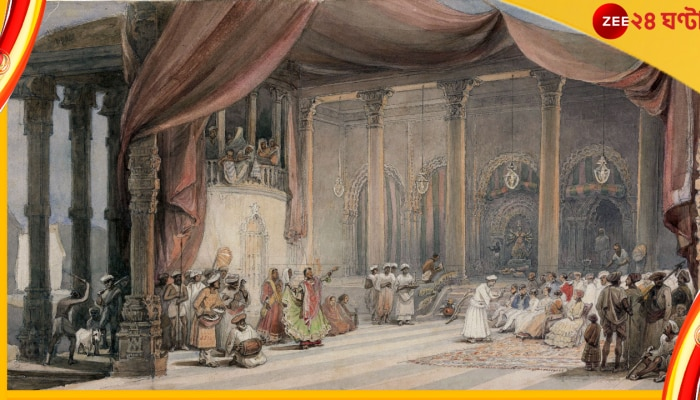
ব্রাহ্মণ ও কায়স্হের কুলীন চিহ্ণিতকরণের প্রথাটি হিন্দু রাজা নিজের ক্ষমতানকশার প্রয়োজনে তৈরি করেছিলেন। মুসলমান রাজত্বে তার আর প্রয়োজন ছিল না। কিন্তু হিন্দু রাজা যাদের উপর নির্ভর করে কুলীনত্ব নির্ণয় করতেন, সেই ঘটক সম্প্রদায় নিজেদের স্বার্থে প্রথাটি বজায় রাখলেন। হিন্দু রাজার আমলে ছিল ব্যক্তিবিশেষকে কুলীন ঘোষণার ব্যবস্হা। মুসলমান রাজত্বে ঘটকসমাজ একত্রত হয়ে তা আরোপ করতে লাগলেন পরিবারের উপর। তা উপাধির পরিবর্তে হয়ে গেল জাতিপ্রথার অঙ্গ।ঘটকরা ইচ্ছা করলে একটি পরিবারকে কুলীনত্ব থেকে নামিয়ে দিতে পারতেন, এবং অমন অকুলীন পরিবারের কেউ কুলীন পরিবারে বিয়ে করার যোগ্যতা হারাতেন। কুলীনরা কেবল কুলীন পরিবারে বিয়ে করতে পারতেন। দেবীবর ঘতক কুলীনদের আরও সঙ্কীর্ণতায় বেঁধে দিয়েছিলেন, 'মেলবন্ধ' প্রথার দ্বারা। অর্থাৎ কেবল কুলীন হলেই চলবে না, পরিবারটিকে বিশেষ মেলের হতে হবে। বিয়ের পাত্রসংখ্যা স্বাভাবিকভাবে কমে গিয়েছিল এর ফলে । কেননা নির্দিষ্ট মেলের বাইরে বিয়ে করলেই কুলভঙ্গ। ব্রাহ্মণের অজস্র বিয়ের উৎস, এবং যৌন যথেচ্ছাচারের পটভূমি হয়ে গিয়েছিল মেলপ্রথা।
পাঁচু শক্তিখান ক্ষত্রিয়বৃত্তি নিয়েছিলেন। কামদেব ব্রহ্মচারীর স্ত্রী ভঙ্গকুলীন বা শ্রোত্রিয় পরিবারের মেয়ে ছিলেন। লক্ষ্মীকান্ত শৈশবে অব্রাহ্মণীর দুধ খেয়েছিলেন। মহারাজা প্রতাপাদিত্যের প্রধান অমাত্য হওয়া সত্ত্বেও উপঢৌকনের দ্বারা ঘটকদের প্রীত রাখেননি। ফলে দেবীবর ঘটক তাঁর পরিবারকে কুলীনত্ব থেকে পতিত করে দেন, ঘটকদের তলবিসভা ডেকে। ঘটকদের চটাবার সাহস, সমাজে একঘরে হবার ভয়ে, কারোর ছিল না। পাল্কি বা হাতির ওপর বসে, বিশাল মিছিল বের করে, দেবীবর ঘটক যেতেন বাৎসরিক ঘটক সভায় সভাপতিত্ব করতে। অমন একটি মিছিল নিয়ে দেবীবর ঘটক কাঞ্চনপল্লী (এখনকার কাঁচরাপাড়া) পৌঁছোবার মুখে, ঘটকসভার অনুষ্ঠান নিষিদ্ধ করে দিয়েছিলেন লক্ষ্মীকান্ত। কাঞ্চনপল্লী তখন ছিল তাঁর পুরানো জমিদারি হাভেলিশহরের অন্তর্গত। দেবীবর ঘটক প্রতিশোধ নিলেন লক্ষ্মীকান্ত'র ঈর্ষান্বিত আর শত্রুভাবাপন্ন আত্মীয় বাগবিক্রমপুর নিবাসী রাঘব বন্দ্যোপাধ্যায়কে সর্বোচ্চ কুলীনে উন্নীত করে; এবং অন্যান্য সমস্ত কুলীন পরিবারকে বারণ করে দিলেন যে কেউ যেন লক্ষ্মীকান্ত'র কোনো মেয়ের সঙ্গে নিজের ছেলের বিয়ে না দেয়।পাঁচু শক্তি খানের ঠাকুর্দা আমাটি-নিবাসী শিব-এর প্রথম ছেলে পরমেশ্বরের বংশধর ছিলেন লক্ষ্মীকান্ত; দ্বিতীয় ছেলে মুরারীর বংশধর ছিলেন রাঘব। পরবর্তীকালে রাঘবের বংশধররা বেগের গাংগুলি হিসাবে খ্যাত হন। রাঘবের নাতিরা জনায়ের গাংগুলি, আর বড়বাজারের গাংগুলি হিসাবে খ্যাত হন।
অবনমনে চিন্তিত হলেন না লক্ষ্মীকান্ত। তিনি তাঁর বন্ধুবান্ধব স্বজনজ্ঞাতি, প্রশংসক, উপদেষ্টা, অমাত্য, সভাসদ, ভাট, ব্রাহ্মণ-পুরোহিত, রাজকীয় আধিকারিক, পোষ্যবর্গ, পন্ডিত প্রমুখের একটা বিশাল সভা ডাকলেন। তাতে নিমন্ত্রণ করলেন ফুলিয়া, খড়দা, বল্লভী এবং সর্বানন্দী মেলের পরিবারের কর্তাদের। এই চারটি ছিল কুলীন ব্রাহ্মণদের সর্বোচ্চ মেল। প্রতিটি মেলকে তিনি প্রস্তাব দিলেন তাঁর চার মেয়ের একজনকে নিজেদের পরিবারে বউ করে নিয়ে যেতে। প্রত্যেক জামাই পাবেন কয়েক লক্ষ রৌপ্যমুদ্রা, আর ছোটখাট জমিদারি। পাত্র পেতে অসুবিধা হল না। বিয়েও তিনি এমন জাঁকজমক করে দিলেন, যাতে তাক লাগিয়ে দেয়া যায়। তাঁর দেখাদেখি আরও বহু অকুলীন পরিবার একই পন্হা অবলম্বন করলেন। ফলত ইংরাজরা আসার আগেই এসে গিয়েছিল ভঙ্গকুলীনের যুগ। কুলীন পরিবারে মেয়েদের বিয়ে দেবার জন্য লক্ষ্মীকান্ত অকুলীন ব্রাহ্মণদের অর্থ সাহায্য করতেন। কুলীন প্রথা তাঁবাদি না হওয়া পর্যন্ত কয়েক প্রজন্ম অব্দি তাঁরা ব্যাপারটি বজায় রেখেছিলেন। এই পরিবর্তন আনার জন্য তিনি তদানীন্তন পণ্ডিতসমাজ দ্বারা 'মহর্ষি' হিসাবে সন্মানিত হয়েছিলেন।
আয়ের আধিক্যে লক্ষ্মীকান্ত'র বংশধররা এরপর অন্যান্য জমিদারিতে বসত গড়া আরম্ভ করলেন। তার মধ্যে সবচেয়ে উল্লেখযোগ্য হল বসতশহর উত্তরপাড়া, হুগলি জেলায় গঙ্গার ধারে। একবার বারাণসী থেকে ফিরে কামদেব ব্র্হ্মচারী তাঁর ছেলেকে বলেছিলেন, গঙ্গার পশ্চিমকূল বারাণসী সমতুল, এই কথা মনে রেখে এমন একটি অঞ্চল খুঁজে, সেখানে বসত গড়তে, এবং কালীমন্দির নির্মাণ করতে। তা সম্ভব হল যখন লক্ষ্মীকান্ত'এ বড় ছেলে রামের নাতি রত্নেশ্বর ( ১৬৭০-১৭২০ ) শেওড়াফুলি-রাজ মনোহর রায়ের কাছ থেকে ১৭০৯ সালে বালির অংশ চকবালি স্বত্ব পেয়ে উত্তরপাড়ার পত্তন করেন। রত্নেশ্বর হলেন জগদীশের ( ১৬২০-১৬৯০ ) চার ছেলের তৃতীয়। বড়িশার বিদ্যাধর ( ১৬৪০-১৭২০ ), যিনি জোব চার্ণক সূত্রে কলকাতার ইতিহাসগুলোয় আলোচিত হন, তিনি রত্নেশ্বর রায়চৌধুরীর বড় ভাই। রত্নেশ্বরই উত্তরপাড়ার আদিপুরুষ। তাঁর বাড়ির নাম ছিল সাবর্ণ ভিলা। জয়কৃষ্ণ মুখোপাধ্যায়, যিনি পরবর্তীকালে উত্তরপাড়াকে শিক্ষা ও সংস্কৃতির জগতে প্রতিষ্ঠা করেন, তাঁদের পরিবারটিও সাবর্ণ চৌধুরীদের জামাই। ভরদ্বাজ গোত্র ছাড়াও, শাণ্ডিল্য গোত্রের এক জামাইকে জমি ও ঐশ্বর্য দিয়ে এনেছিলেন উত্তরপাড়ার সাবর্ণ চৌধুরীরা। উনিশ শতকে যেটি ডাকাতে কালীর মন্দির নাম,এ খ্যাত ছিল, সম্ভবত সেটি রত্নেশ্বর কর্তৃক প্রতিষ্ঠিত। সাবর্ণ হাভেলির এক অংশে শ্যামরায় এবং অন্য অংশে তিনি প্রতিষ্ঠা করেন পঞ্চমুন্ডের আসন।
লক্ষ্মীকান্ত'র সাত ছেলেই কিন্তু 'রায়চৌধুরী' পদবি ব্যবহার করেননি। চতুর্থ ছেলে বীরেশ্বর পেয়েছিলেন চক্রবর্তী উপাধি। পঞ্চম ছেলে কৃষ্ণ পেয়েছিলেন সিংহ। তাঁদের বংশধররা এগুলোকে পদবি করে নিয়েছেন। মোগল আমলে জাগিরদার, জমিদার, কানুনগোরা সারা সুবে বাংলা জুড়ে রায়চৌধুরী, রায় ও চৌধুরী খেতাব পাচ্ছিলেন। এই প্রেক্ষিতে ভঙ্গকুলীন লক্ষ্মীকান্ত, নিজের পরিবারের ব্রাহ্মণত্বটা যাতে সহজে যে-কেউ জানতে পারেন, তাই সাবর্ণ চৌধুরী অভিধাটির প্রচলন করেন। যেহেতু তাঁকে গোষ্ঠীপতির স্বীকৃতি দিয়েছিলেন তাঁর জাগিরের উচ্চবর্ণরা, তাই অভিধাটির দ্রুত প্রচলন ঘটে। গঙ্গোপাধ্যায়রা সাবর্ণ গোত্র। সাবর্ণ চৌধুরী অভিধাটি বিনির্মাণ করলে গঙ্গোপাধ্যায় ও লক্ষ্মীকান্ত'র বংশধররূপে জেনে যাবেন শ্রোতা। সাবর্ণ হল সূর্যতনয় বা সূর্য বংশ প্রসূত। ১৬৪৯ সালে উনআশি বছর বয়সে লক্ষ্মীকান্ত মারা যান।
সাবর্ণ চৌধুরী অভিধাটির পাশাপাশি, ভঙ্গকুলীন হবার প্রেক্ষিতে, আরেকটি কাজ করেছিলেন লক্ষ্মীকান্ত। ১৬১০ সালে বড়িশার কাছারিবাড়ির পাশে একটি আটচালা তৈরি করে প্রতিবছর শরৎকালীন দুর্গোৎসবের সূত্রপাত করেন তিনি। সপরিবারে দুর্গা, অর্থাৎ লক্ষ্মী, সরস্বতী, কার্তিক, গণেশসহ, এইটিই সম্ভবত সুবে বাংলার প্রথম শরৎকালীন পুজো।এই পারিবারিক পুজোটিতেই প্রথম কার্তিক আবির্ভূত হলেন বাঙালি জমিদাররূপে। তার আগে কার্তিক পূজিত হতেন বর্ম-পরা যুদ্ধের দেবতারূপে, সম্রাট সমুদ্রগুপ্তের আদলে। তিনপুরুষ পর্যন্ত যেহেতু তাঁর সম্পত্তির বিভাজন হয়নি, তাই প্রজাদের অর্ঘ্যদানের জন্য উত্মুক্ত শারদোৎসবটির জাঁকজমক ছিল বহুকাল পর্যন্ত। আওরঙজেবের পৌত্র আজিম-উস-শানের হুকুমে ১০ নভেম্বর ১৬৯৮ সালে যখন সাবর্ণ চৌধুরীদের বাধ্য করা হলো কলকাতা, সুতানুটি, গোবিন্দপুর গ্রাম তিনটির প্রজাস্বত্ত্ব ইস্ট ইনডিয়া কোম্পানিকে হস্তান্তর করতে, তখন থেকে লক্ষ্মিকান্ত'র বংশধররা আর্থিক দুর্বলতায় আক্রান্ত হলেন।তারপরে তাঁরা বাধ্য হলেন, ভিন্ন জীবিকার সন্ধানে, বঙ্গদেশ ও ভারতবর্ষে ছড়িয়ে পড়তে। হস্তান্তরের সময়েও, অতবড় বিপদের মুখে, তাঁরা কিন্তু ফারসি দলিলটিতে বঙ্গদেশকে জন্নত অর্থাৎ স্বর্গ বলতে ভোলেননি।
লক্ষ্মীকান্ত'র বংশধরদের গৌরব অবসানের আরেকটি কারণ হল যে জগৎশেঠ, রাজা মহেন্দ্র, রাজা রামনারায়ণ, রাজা রাজবল্লভ, রাজা কৃঢ়্ণচন্দ্র, দুর্লভরাম, গঙ্গারাম ঠাকুর, নকুড়চন্দ্র সরকার, গোবিন্দরাম, রঘুমিত্র, শোভারাম বসাক, শুকদেব মল্লিক, দয়ারাম বসু, হরিকৃষ্ণ ঠাকুর, দুর্গারাম দত্ত, চৈতন্য দাস, দুর্লভচরণ বসাক, চূড়ামণি বিশ্বাস, রাজারাম পালিত, নীলমণি চৌধুরী প্রমুখ হিন্দু ভূস্বামী আর মণিকরা যখন সিরাজদৌলার বিরুদ্ধে দল বেঁধে ইস্ট ইনডিয়া কোম্পানিকে সাহায্য করা আরম্ভ করেছিলেন, তখনও সাবর্ণ চৌধুরীরা নবাবের পক্ষ ত্যাগ করতে পারেননি্র ফলে ইংরাজরা সাবর্ণ চৌধুরীদের আর দাঁড়াতে দেয়নি। ইংরাজদের নতুন ক্ষমতানকশায় তাঁরা একেবারে অপাংক্তেয় হয়ে যান।
বড়িশা-বেহালার সাবর্ণ রায়চৌধুরী পরিবারের জনক লক্ষ্মীকান্ত রায়চৌধুরীর বড় ছেলের নাতি রত্নেশ্বর রায়চৌধুরী (১৬৭০ - ১৭২০) শেওড়াফুলি - রাজ মনোহর রায়ের কাছ থেকে ১৭০৯ সালে চকবালির উত্তরাংশের স্বত্ব কিনে বাগানের শহররূপে উত্তরপাড়া শহরের পত্তন করেন। বড়িশার বিদ্যাধর রায়চৌধুরী (১৬৪০ - ১৭২০), যিনি জোব চার্ণক সূত্রে কলকাতার ইতিহাসগুলোয় আলোচিত হন, তিনি রত্নেশ্বরের বড় ভাই। রত্নেশ্বরই উত্তরপাড়ার আদিপুরুষ। তার বাড়ির নাম ছিল 'সাবর্ণ হাভালি', যা উনিশ শতকে পরিবর্তন করে রাখা হয় 'সাবর্ণ ভিলা'। সাবর্ণ চৌধুরীরা ভঙ্গকুলীন ছিলেন বলে তারা অন্যান্য কুলীন পরিবারের সন্তানদের জামাই করে উত্তরপাড়ায় এনে প্রতিষ্ঠা দিয়েছিলেন। জয়কৃষ্ণ মুখোপাধ্যায়, যিনি উত্তরপাড়াকে শিক্ষা ও সংস্কৃতির জগতে প্রতিষ্ঠা করেন তিনি ছিলেন সাবর্ণ চৌধুরীদের জামাই। এ-বিষয়ে যাবতীয় নথিপত্র সাবর্ণ রায়চৌধুরী পরিবার পরিষদের বড়িষাস্হিত সংগ্রহশালায় সংরক্ষিত আছে।

ভারতীয় উপমহাদেশের প্রথম পেশাদার ফোটোগ্রাফার-আর্টিস্ট লক্ষ্মীনারায়ণ রায়চৌধুরী, যিনি ১৮৮০ সালে লাহোর মিউজিয়ামের কিউরেটার জন লকউড কিপলিং-এর কর্মচারী ছিলেন, তিনি উত্তরপাড়া শহরের প্রতিষ্ঠাতা রত্নেশ্বর রায়চৌধুরীর বংশধর।
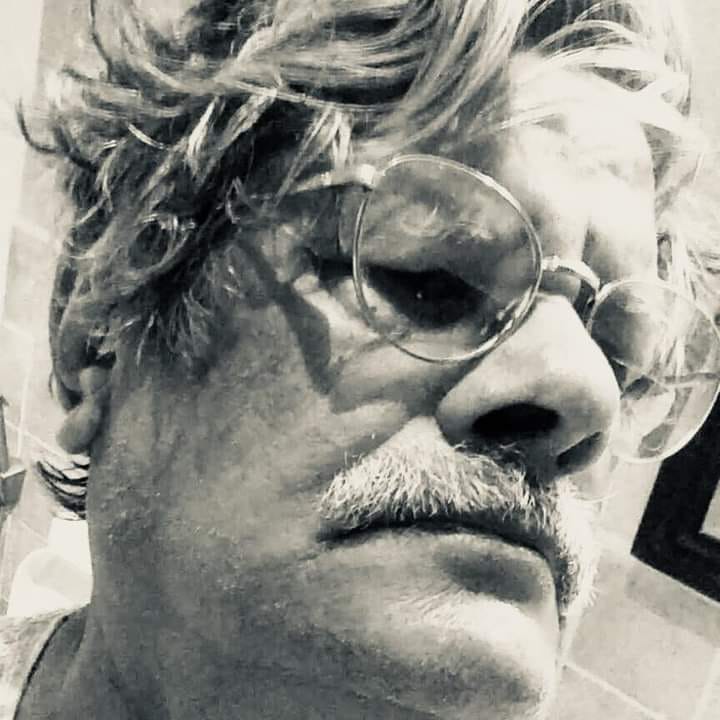
বিংশ শতাব্দীর ষাটের দশকে বাংলা সাহিত্য তোলপাড় করা হাংরি আন্দোলন নামে যে সাহিত্য - শিল্প আন্দোলন হয়েছিল, তার দুই প্রধান পরিচালক ছিলেন উত্তরপাড়ার সাবর্ণ রায়চৌধুরী পরিবারের সন্তান। তারা হলেন সমীর রায়চৌধুরী ও মলয় রায়চৌধুরী।